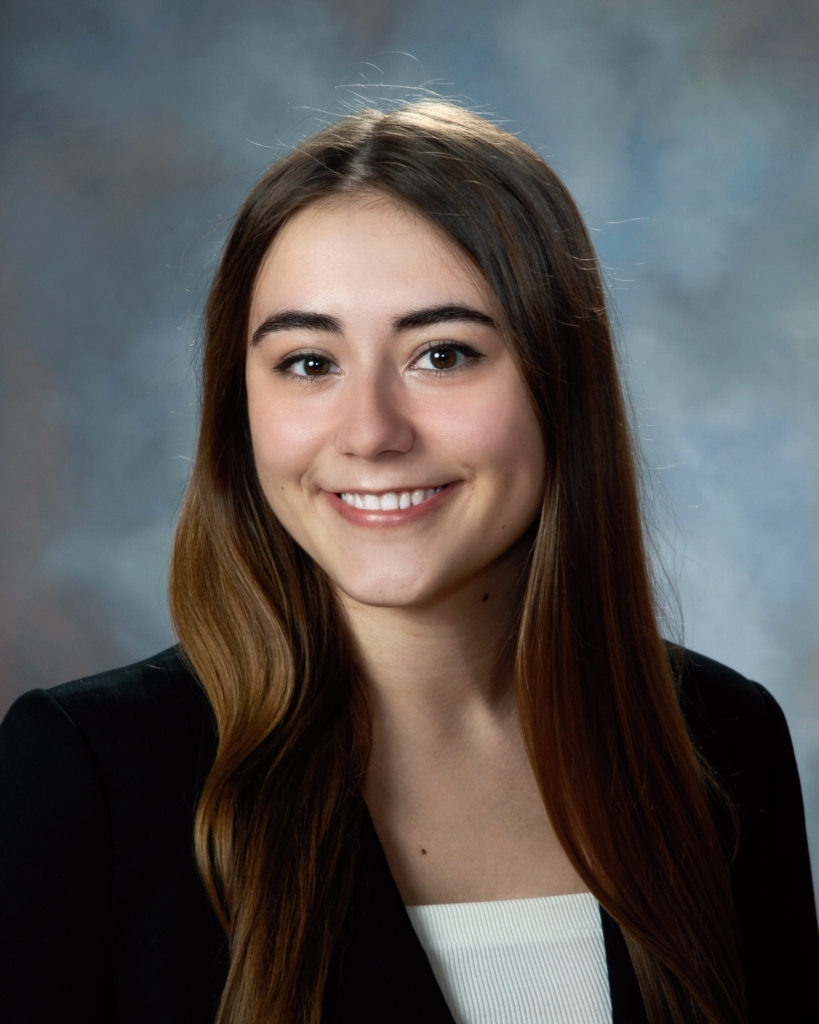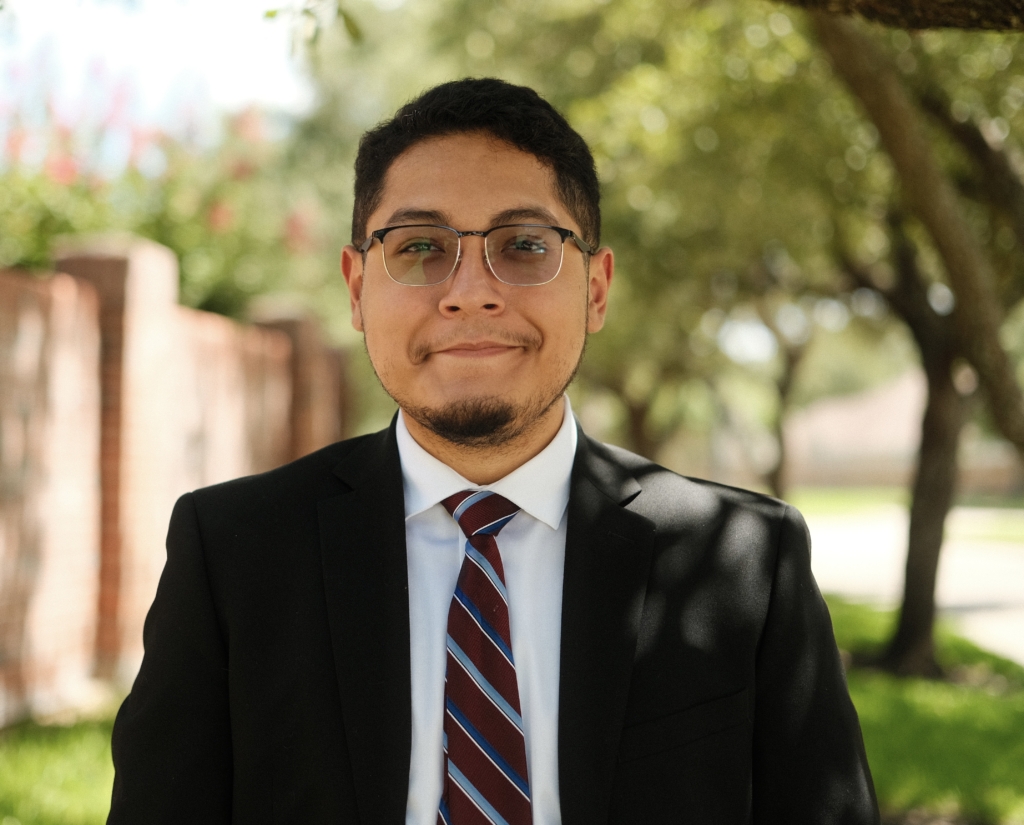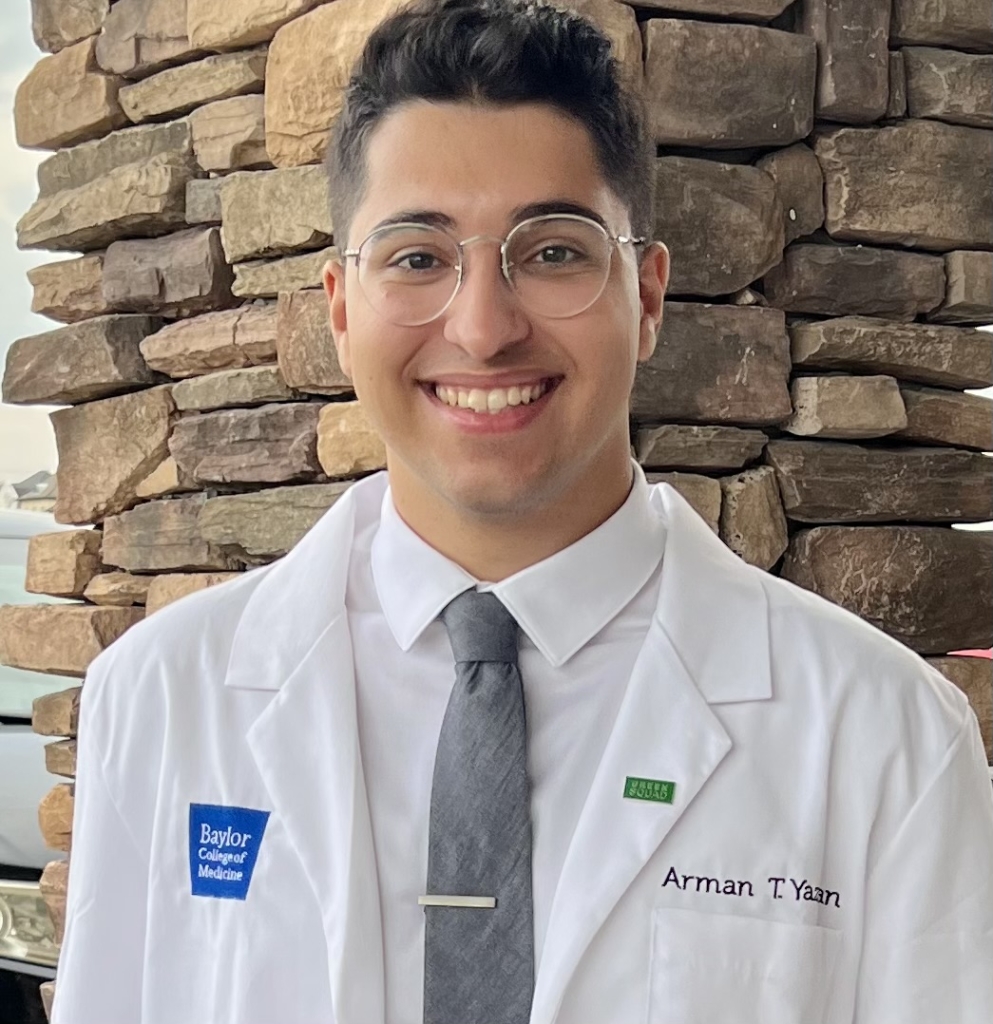Year-End Match Opportunity! Your donation multiplies. Donate now ➔
Each year, Baylor College of Medicine hosts the Henry J.N. Taub & James K. Alexander Medical Student Research Symposium, an event where medical students present original research in clinical, basic science, and health system science disciplines. During Alumni Reunion, we are proud to spotlight this year’s award-winning presenters—offering alumni a chance to engage with the next generation of physician-scientists and the impactful work shaping the future of medicine.
Click here for the full schedule of Reunion events.

Pride Coalition (PrideCo) serves to create a supportive environment fostering community and well-being for the LGBTQIA+ population at Covenant House Texas (CHT), a temporary youth housing shelter. PrideCo hosted twice-weekly sessions at CHT, offering educational workshops, cooking classes and social events tailored through ongoing needs assessments. A mixed-methods pre-post study was conducted to assess program efficacy and track participant outcomes. Quantitative data from pre- and post-intervention surveys used the validated Sense of Belonging Instrument, while qualitative feedback on the program was solicited in the post-intervention survey only and was analyzed using codebook thematic analyses by two independent reviewers to identify recurring themes and participants’ benefits from PrideCo sessions. Analysis of six pre-intervention and six post-intervention surveys from 11 unique participants revealed an increased sense of belonging, although these results were not statistically significant. This increase, however, was corroborated by the theme of sense of belonging and acceptance from the thematic analysis of the qualitative feedback. Participants also noted that our focus on community, career readiness and life skills addressed their unique needs. The PrideCo initiative highlights the importance of targeted, sustainable programming for LGBTQ+ youth experiencing homelessness. Continuing to expand community partnerships will strengthen resource availability and broaden impact.
The Pride Coalition (PrideCo) is a support group led by students at Baylor College of Medicine in collaboration with Covenant House Texas (CHT), a temporary youth housing shelter. PrideCo provides a safe, empowering environment for LGBTQ+ participants, conducted via twice-weekly sessions with activities such as cooking classes, mindfulness and coping skills exercises, career readiness workshops, health education, arts-based expression, celebrations of LGBTQ+ history, and more. Pre- and post-intervention surveys given to PrideCo participants reflect the program’s positive impact on member well-being and sense of belonging. Given PrideCo’s continuing success, we hope that similar initiatives may be widely implemented to serve other LGBTQ+ youth and their unique needs.

Children and adolescents with cerebral palsy (CP) are at high risk for subluxation and dislocation of the femoral head due to asymmetrical activity of muscles surrounding the hip joint. Many patients, especially those unable to ambulate, eventually require corrective bone surgery secondary to pain and difficulties in caregiving that result from severe subluxation and dislocation. In this work, we construct several models to predict the risk of a patient requiring bone surgery within the next five years. The model incorporates clinical data (such as patient age and motor function assessment scores) and x-ray imaging (including the image itself and derived measures such as degree of hip subluxation) from 40 patients followed at Texas Children’s Hospital. The best-performing model achieved high specificity (95%) and AUC score (0.94) for prediction of five-year risk. Our work shows promise as a decision assistance tool and as an adjunct for patient and parent surgical counseling, though further work with more data is needed to validate these results and improve model sensitivity.

This qualitative study examines the factors driving frequent emergency department (ED) use among socioeconomically disadvantaged older adults. Researchers interviewed 68 patients aged 60+ years who had visited a public safety net hospital ED at least four times in the past year. Findings revealed that many faced unmet social needs, including housing instability (32%), transportation barriers (23%) and food insecurity (29%). The analysis identified six patient profiles based on health conditions and care access issues, each mapping to a specific solution to reduce frequent ED use among older adults. The study concludes that clinical complexity is a major driver of ED use, highlighting the need for improved outpatient care and alternative healthcare solutions for this population.

As Albert Schweitzer Fellows, Zena Karagoli, M.D. candidate ’26, and Madeline Hawkins, M.D. candidate ’26, have partnered with YES Prep Public Schools to facilitate Nourish, an after-school cooking class that teaches at-risk students valuable cooking skills, nutritional didactics and food safety. Their research reveals the impact of Nourish, including increased health literacy and frequency of healthy behaviors.

This qualitative study examines the factors driving frequent emergency department (ED) use among socioeconomically disadvantaged older adults. Researchers interviewed 68 patients aged 60+ years who had visited a public safety net hospital ED at least four times in the past year. Findings revealed that many faced unmet social needs, including housing instability (32%), transportation barriers (23%) and food insecurity (29%). The analysis identified six patient profiles based on health conditions and care access issues, each mapping to a specific solution to reduce frequent ED use among older adults. The study concludes that clinical complexity is a major driver of ED use, highlighting the need for improved outpatient care and alternative healthcare solutions for this population.

The project was done at Baylor (Houston and Temple campuses) to evaluate the impact of a redesigned two-hour educational session on social determinants of health for first-year medical students. The session (which combined student and faculty-led discussions) aimed to improve students’ knowledge, attitudes and advocacy related to SDOH through case-based learning.

Parental emotional intelligence significantly influences children’s development and mental health. Children of parents who engage in substance use experience higher rates of maltreatment and overly punitive parenting. Family therapy style interventions improve child-parent relationships and support parents through substance use recovery. Film can display complex family dynamics and facilitate difficult conversations. Our project aimed to teach mothers pediatric emotional development through film as a framework for understanding their children’s behavior and developing healthy parenting styles. In our project, we had eight participants consisting of mothers of children ages 3-12 and who were undergoing residential substance use disorder (SUD) treatment at Santa Maria Hostel. We taught five classes, starting with a movie night showing Inside Out. Afterward, we hosted four discussion-based classes addressing the stages of pediatric development of several emotions and important age-dependent milestones in their children. We focused on the emotions identified in the film Inside Out: fear, anger, joy, disgust and sadness. We administered a pre-class survey that measured emotional intelligence as emotional quotient (EQ) and parenting style. Our results showed that mothers who completed the full survey (5/8) scored highest on the EQ domains of Self-Awareness and Empathy, with 80% scoring at the level of “strength” in these areas. The weakest EQ domain for all mothers was Managing Emotions, followed by Motivating Oneself (60%). None of the participants practiced “authoritarian” parenting, with 80% scoring highest in “authoritative” parenting and 20% highest in “permissive” parenting. In conclusion, most participating mothers excelled in EQ’s Self-Awareness and Empathy domains, struggled most with Managing Emotions and practiced authoritative parenting. Further opportunities for intervention for mothers undergoing SUD recovery include teaching emotional regulation techniques to foster positive child-parent relationships.

In adult lung transplantation, predicting mortality for individuals on the waitlist is critical for optimizing candidate prioritization. While the Composite Allocation Score (CAS) aids in this process, a dedicated index akin to the MELD score in liver transplantation has not yet been developed to predict 3-month mortality based on pre-transplant factors. This study aimed to develop a predictive score for 3-month mortality among adult lung transplant candidates.

Glaucoma is an age-related neurovascular disease, with ocular hypertension (OHT) and aging as key risk factors. The retinal microvasculature undergoes structural changes over time, leading to vascular dysfunction. Our study investigates acellular capillaries (ACs) as biomarkers of retinal microvascular health across all three retinal capillary plexi—the superficial (SRCP), intermediate (IRCP) and deep (DRCP) plexi. We quantified AC formation in young and aged wild-type mice with OHT and found that aging alone primarily affects the IRCP. In contrast, OHT in aged retinas leads to widespread microvascular loss. These findings highlight ACs as potential indicators of age- and OHT-induced microvascular damage and are particularly relevant to glaucoma progression.